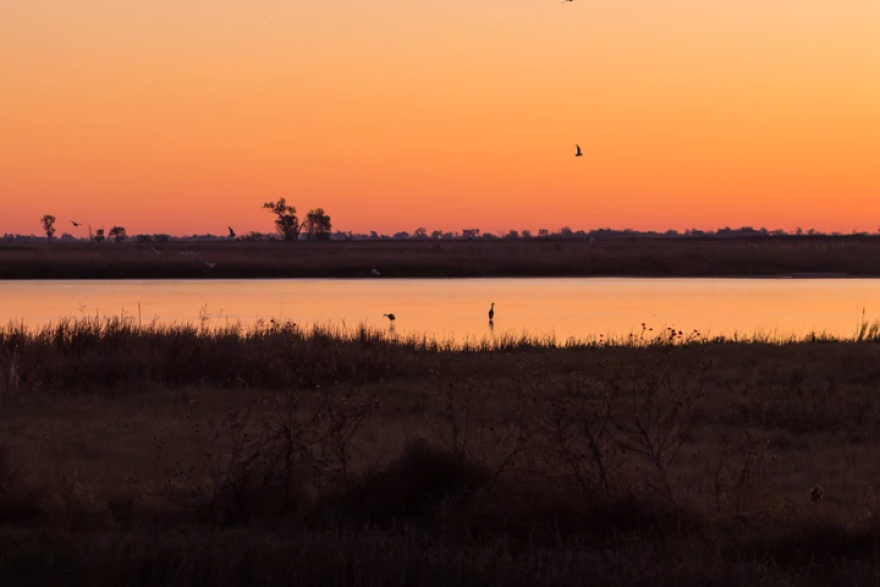TOPEKA, Kansas — About 10 barrels of oil and 1,500 barrels of industrial salt water spilled from an oil pipeline into a creek near the Quivira Wildlife Refuge in central Kansas earlier this month.
Rattlesnake creek runs through the refuge, an important migratory stop for birds. The spill happened outside of the refuge and it isn’t immediately clear what the impact on wildlife will be.
Quivira officials didn’t immediately return requests for comment, but the refuge’s manager told the Kansas Reflector that they have barriers in the creek to catch contaminants.
“We’re watching,” said Mike Oldham, manager of the refuge, which is run by the U.S. Fish and Wildlife Service. “We’re waiting. We’re monitoring.”
The spill happened about 35 miles west of Hutchinson. It’s about 99% cleaned up, said Linda Berry, director of public affairs and consumer protection for the Kansas Corporation Commission.
She said in an email that no regulations were violated and a broken lead line was at fault. That line, owned by La Veta Oil & Gas, has already been repaired.
This spill pales in comparison to a recent oil spill in Washington County, Kansas. That spill, which was one of the largest in the state’s history, was originally estimated at 588,000 gallons of crude oil. That total was later lowered to 543,000 gallons.
In addition to oil, one unknown is the impact of 1,500 barrels of salt water that spilled into the creek. It’s a brine left over from extracted oil and gas. The Environmental Protection Agency says this brine can be saltier than seawater.
The Quivira land has fresh water but it also includes saltwater marshes. Amy Burgin, a senior scientist at the Kansas Biological Survey & Center for Ecological Research, said industrial salt water spilling into the marsh can still have negative ecological effects.
“Plants have to be very, uniquely adapted to a range of salt tolerance,” she said. “If you get blasted with something that’s really outside of your tolerance range, that could potentially have an impact on some of the plant community in that area.”
Burgin said it is possible there could be visible damage from salt water, such as dead vegetation. But she’d like to see officials continue to test for salt levels in the affected areas to truly monitor the spill's impact.
The creek will be monitored for another six months.
Berry said that a dam is keeping the contained water separate. Fresh water was used to push water toward the dam so everything could be vacuumed out of the creek. Clean up crews are testing the water to confirm that the industrial salt water is being removed.
“As far as how it’s going to affect us, we don’t really know right now until we start getting a little more flow coming down the creek,” Oldham told the Reflector, “and we’ll see if any oil comes our way.”
Blaise Mesa reports on criminal justice and social services for the Kansas News Service in Topeka. You can email him at blaise@kcur.org.
The Kansas News Service is a collaboration of KCUR, Kansas Public Radio, KMUW and High Plains Public Radio focused on health, the social determinants of health and their connection to public policy.
Kansas News Service stories and photos may be republished by news media at no cost with proper attribution and a link to ksnewsservice.org.
Copyright 2023 KCUR 89.3. To see more, visit KCUR 89.3. 9(MDA4OTAxNzAzMDEzMjc0MTc2MzA5ZDZlMw004))







